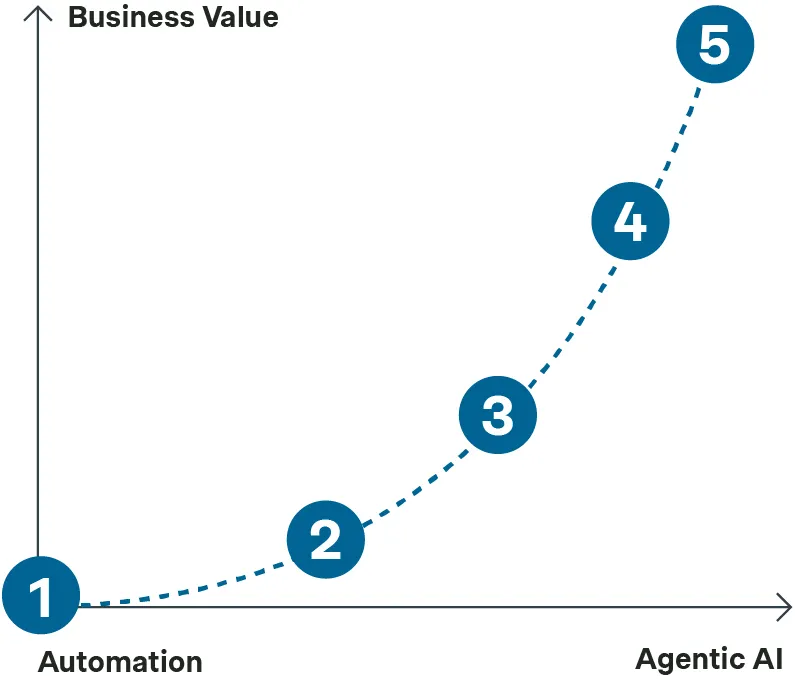From cost savings to growth
AI is transforming industrials - but are you leveraging it to drive growth?
Artificial Intelligence is becoming increasingly embedded in industrial operations, from streamlining processes and optimizing supply chains to reducing downtime. But AI efficiency is just the beginning. The next phase demands a shift in strategy. Leaders must think beyond cutting costs and embrace industrial AI strategy to drive revenue, improve margins, and unlock new growth opportunities.
Companies that go beyond automation are already seeing measurable impact in areas like dynamic pricing, AI-powered customer segmentation, and predictive sales strategies. But for many, uncertainty remains:
- Where does AI add the most value in an industrial setting?
- How do you balance automation with human expertise in decision-making?
- What’s the right AI adoption strategy to maximize ROI?
Navigating these questions requires a structured approach, aligning investments with business goals, industry-specific trust factors, and commercial impact.
Where does your company stand in this shift? The AI Maturity Curve provides a roadmap for moving beyond industrial automation and toward revenue-generating AI strategies.
The AI maturity curve: Where does your business stand?
Move from process automation to AI-driven revenue.
AI adoption is a journey. Companies progress through distinct stages as they integrate AI into their operations and commercial strategy. While many companies today use AI, only those further along the maturity curve achieve true AI transformation – unlocking new opportunities in pricing, sales, and revenue growth.
Explore the five stages of AI maturity in industrials:

AI is used to automate repetitive, rule-based tasks, reducing manual effort and improving accuracy. At this stage, it is embedded in quality control, document processing, and routine operational workflows.
Examples: AI-assisted defect detection in manufacturing, automated invoice processing.
AI begins to analyze patterns and predict trends, assisting decision-making but not executing actions autonomously. Real-time analysis helps optimize maintenance schedules, forecast demand, and improve supply chain efficiency, but human oversight remains critical.
Examples: Predictive maintenance in industrial equipment, AI-driven demand forecasting.
AI works alongside human decision-makers, executing predefined actions within clear parameters. At this stage, artificial intelligence supports pricing recommendations, sales enablement, and operational adjustments, with final decisions made by humans.
Examples: AI-driven pricing optimization with human approval, automated supply chain adjustments within set limits.
AI moves beyond analytics and decision support to generate new content, strategies, and solutions. This phase includes AI-driven product design, customer engagement, and sales strategy optimization.
Examples: AI-assisted R&D for industrial components, AI-generated personalized B2B sales proposals.
AI operates autonomously, making complex decisions across multiple business functions with minimal human intervention. Companies leverage this to dynamically optimize revenue, pricing, and operational strategies in real time.
Example: AI-powered revenue management, autonomous supply chain optimization adjusting to market shifts in real time.
Automation (stage 1) → Machine Learning (stage 2)
AI is automating routine tasks, but decision-making still relies on human input. Moving to Machine Learning means using AI to generate insights and assist decisions.
Machine Learning (stage 2) → Human-AI Hybrid (stage 3)
AI provides insights, but humans still act. The next step is enabling AI to execute within guardrails and build trust through collaboration.
Human-AI Hybrid (stage 3) → Generative AI (stage 4)
AI supports decisions, but not creation. Advancing means using AI to generate content, ideas, and solutions that drive commercial impact.
Generative AI (stage 4) → Agentic AI (stage 5)
AI creates content but needs oversight. Agentic AI acts independently, adapting in real time and driving decisions across the business.
AI for industrials: From insight to impact
Your guide to AI transformation
Many companies struggle to transition from efficiency gains into AI-driven commercial impact. Our latest report explores:
- The AI maturity curve: Understand where your company stands and how to progress
- Key opportunities and challenges: Leverage insights from predictive analytics to AI-driven pricing
- Practical steps to AI adoption: Learn how to structure AI investments for long-term growth
Explore AI’s next frontier in industrials and discover your AI roadmap to success.

Unlock AI for industrial growth
For complete AI transformation, leaders must adopt an industrial AI strategy that drives revenue growth. Companies moving up the AI maturity curve with a structured, data-driven approach will outpace competition just using AI for process optimization.
By combining 40 years of industrial expertise with the digital capabilities of Simon-Kucher Elevate, we help industrial leaders harness AI effectively. Our team will help you identify high-impact AI applications, optimize pricing and revenue strategies, and build AI-driven commercial models that deliver impactful results.
Let’s discuss how AI can drive better growth for your business.